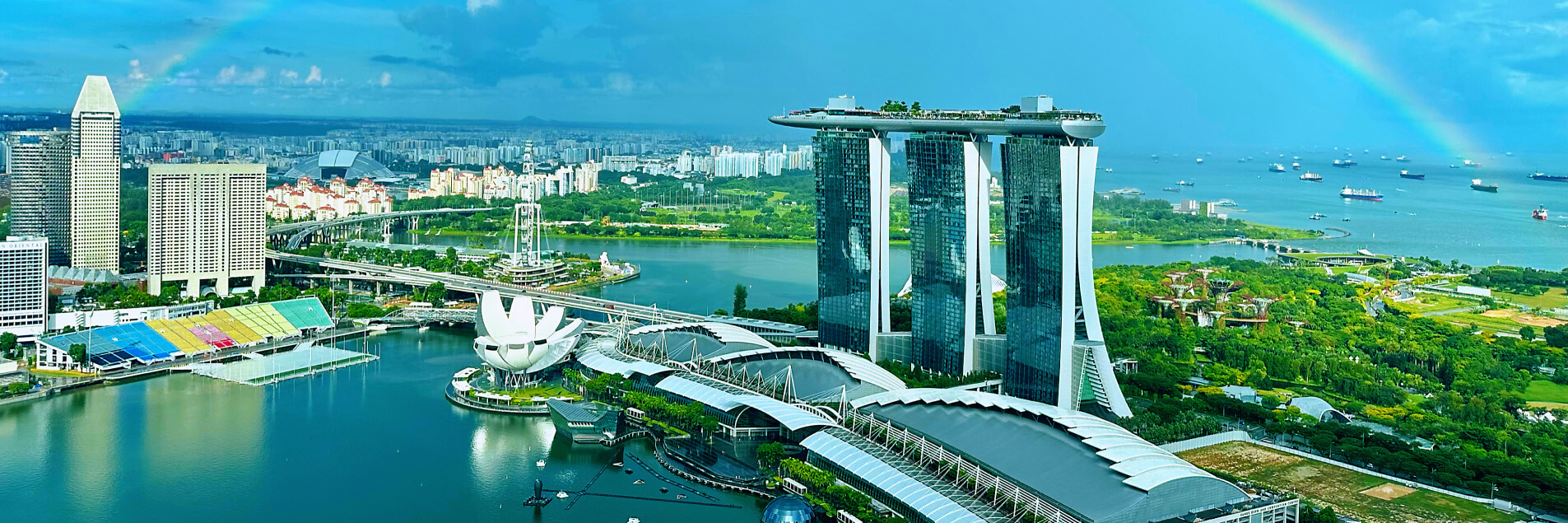
Singapore's construction industry is undergoing a massive transformation, driven by the need for greater efficiency, sustainability, and safety. As the nation tackles challenges like land scarcity, labor shortages, and climate change, the sector is embracing innovative technologies and practices.
From AI-powered tools to robotics and centralized project management systems, here's a deep dive into the trends and technologies shaping the future of construction in Singapore.
Prefabricated Prefinished Volumetric Construction (PPVC) and modular building methods are revolutionizing Singapore's construction landscape. By manufacturing building components off-site in controlled environments, these techniques reduce construction timelines, improve quality, and minimize on-site waste. The government's push for Design for Manufacturing and Assembly (DfMA) is accelerating adoption, making it a cornerstone of Singapore's construction strategy.
Building Information Modeling (BIM) is a game-changer for Singapore's construction industry. This digital tool creates 3D models of buildings, enabling better planning, design, and project management. BIM fosters collaboration among architects, engineers, and contractors, reducing errors and improving efficiency. The Building and Construction Authority (BCA) has mandated BIM for large-scale projects, ensuring its widespread use across the industry.
Singapore's commitment to sustainability is reshaping its construction sector. The BCA's Green Mark scheme encourages the use of energy-efficient materials, renewable energy, and sustainable practices. Technologies like solar panels, green walls, and rainwater harvesting systems are becoming standard in building designs. Additionally, low-carbon concrete and recycled materials are gaining traction, aligning with Singapore's goal of achieving net-zero emissions by 2050.
Centralized project management tools are streamlining construction processes in Singapore, impacting various stakeholders from main contractors to subcontractors and even individual workers. These tools integrate project planning, scheduling, budgeting, and communication into a single system, enhancing collaboration and transparency. By providing real-time updates and centralized data access, they ensure smoother workflows, reduce delays, and improve accountability across all levels of the construction process.
AI and data analytics are transforming Singapore's construction industry by optimizing project management and improving decision-making. AI algorithms analyze historical and real-time data to forecast project delays, cost overruns, and resource shortages, enabling proactive problem-solving. This ensures smoother project execution and better resource allocation, ultimately driving efficiency and reducing risks.
By integrating AI-powered video analytics with CCTV cameras, these systems monitor construction sites in real-time, detecting safety hazards like workers not wearing helmets or unauthorized access to restricted areas. This technology enhances safety compliance and reduces accidents, ensuring a safer working environment.
Robotics and automation are addressing labor shortages and boosting productivity in Singapore's construction sector. Robots are now used for tasks like bricklaying, welding, and painting, while autonomous vehicles transport materials on-site.
The Singapore government is actively promoting the use of robotic painting systems to address labor shortages and improve efficiency. These robots ensure consistent quality and reduce the time required for painting tasks, allowing workers to work on other tasks while the robots paint autonomously. Drones can also be used for site inspections, surveying, and progress monitoring, providing real-time data and improving safety.
AR and VR are enhancing the design and construction process in Singapore. Architects and engineers use these technologies to visualize projects, identify potential issues, and make adjustments before construction begins. On-site, AR overlays digital plans onto physical structures, improving accuracy and efficiency.
Innovative materials like self-healing concrete, carbon fiber composites, and translucent aluminum are being explored to enhance the durability, strength, and aesthetics of buildings. These materials not only improve performance but also contribute to sustainability by reducing maintenance needs and extending the lifespan of structures.
As the industry adopts new technologies, there is a growing demand for a skilled workforce. Singapore is investing in training programs and partnerships with educational institutions to equip workers with the necessary skills. Initiatives like the Construction Industry Transformation Map (ITM) aim to attract young talent and upskill existing professionals, ensuring the workforce is ready for the future.
The future of construction in Singapore is being shaped by a combination of cutting-edge technologies, sustainability goals, and innovative practices. From AI-powered tools and robotics to centralized project management systems and green building techniques, the industry is evolving to meet the challenges of urbanization and climate change.
It is important to note that these technologies are not standalone solutions but interconnected systems that work together to create a highly efficient construction ecosystem. For example, BIM integrates with centralized project management tools to provide real-time updates and streamline workflows, while AI and data analytics enhance decision-making by predicting risks and optimizing resource allocation. Robotics and automation handle labor-intensive tasks like painting and material transport, and AR/VR with AI video analytics ensures safety and precision on-site.
By embracing these trends, Singapore's construction sector is not only building structures but also paving the way for a smarter, greener, and more resilient future. As the nation continues to lead in urban development, its construction industry will serve as a global benchmark for innovation and sustainability.